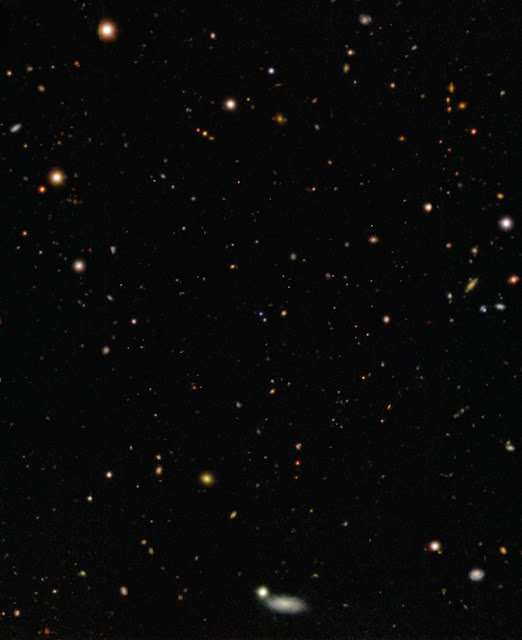Maunakea, Hawaiʻi – An international team of astrophysicists using W. M. Keck Observatory on Maunakea, Hawaiʻi Island have uncovered a possible origin of fast X-ray transients (FXTs) — mysterious, fleeting bursts of X-rays that have long puzzled astronomers.
Using a combination of telescopes around the globe and in space, the team studied the closest FXT associated with the explosive death of a massive star, or supernova, ever observed. A geyser of high-energy particles, or jet, trapped inside a supernova produced the FXT, the scientists discovered.
When jets burst through a massive star’s onion-like layers, they generate gamma-ray bursts (GRBs), the most powerful and luminous explosions in the universe. When the jets are stifled, however, they emit lower levels of energy, which astronomers can detect only from X-ray signals. The new observations now point to these “failed” jets as a source of the emission, explaining the historically elusive phenomena.
This finding marks a significant step in understanding the diverse landscape of cosmic explosions — bridging the gap among FXTs, GRBs and supernovae.
A pair of studies, led by Northwestern University and the University of Leicester in England, has been accepted by The Astrophysical Journal Letters.
“Since the 1970s, astronomers have detected FXTs — blasts of X-rays from distant galaxies that can last from seconds to hours,” said Northwestern’s Jillian Rastinejad, lead author of one of the studies. “But their origin sources have remained a long-standing mystery. Our work definitively shows that FXTs can originate from the explosive death of a massive star. It also supports a causal link between GRB-supernovae and FXT-supernovae, in which GRBs are produced by successful jets, and FXTs are produced by trapped weak jets.”
The team utilized the various time zones and locations of its members to gather and analyze the data, passing it along to the next time zone to make decisions on the next night of observations.
“The result? A massive and beautiful stream of data collected from facilities large and small, on the ground and in space, chronicling this event’s first month. It takes really special events to motivate such a global effort, and this FXT was one,” said Northwestern’s Wen-fai Fong, a senior author on the study.
Spectroscopy obtained from Keck Observatory’s Low-Resolution Imaging Spectrometer (LRIS) revealed that SN 2025kg is a Type Ic-BL supernova—an especially fast and powerful kind of stellar explosion. By analyzing the light, scientists measured how quickly the star’s material was ejected (nearly 19,000 kilometers per second or about 11,800 miles per second) and gained insight into the immense energy released during the blast.
“The fact that Keck Observatory was able to respond quickly to a transient of interest was pivotal to understanding the composition and speed of the supernova ejecta, and how much material was shed,” said Fong. “Its nimble capabilities were particularly important at later times when the source was fainter and only detectable with the most sensitive ground-based spectrographs.”
“This result highlights the important role Keck Observatory plays with observatories across the globe and in space,” added John O’Meara, chief scientist and deputy director at the observatory. “The international team has really pulled out all the stops to characterize and understand this new type of transient.”
“The fact that Keck Observatory was able to respond quickly to a transient of interest was pivotal to understanding the composition and speed of the supernova ejecta, and how much material was shed,” said Fong. “Its nimble capabilities were particularly important at later times when the source was fainter and only detectable with the most sensitive ground-based spectrographs.”
“This result highlights the important role Keck Observatory plays with observatories across the globe and in space,” added John O’Meara, chief scientist and deputy director at the observatory. “The international team has really pulled out all the stops to characterize and understand this new type of transient.”
An explosive neighbor
“FXTs
have long fascinated us but their study has relied on a small number of
events that were discovered in serendipitous ways,” Fong said. “The
Einstein Probe has revolutionized this field by increasing the number of
known events by ten-fold in just a year of operations. Thus, it is not
only filling in the previously sparse landscape of FXTs, but also making
our picture of that landscape crisper, bringing facets of these
explosions into focus that we had not imagined before.
Shortly after its launch, the Einstein Probe captured the most nearby FXT,
associated with a supernova, to date. Dubbed EP 250108a, the FXT was
located 2.8 billion light-years away from Earth, within the river-like
constellation Eridanus. Its close proximity to Earth gave astronomers an
unprecedented opportunity to observe the event’s evolution.
To track this evolving behavior, the team captured the event’s signal
across multiple wavelengths. The Gemini South telescope at the
International Gemini Observatory provided near-infrared data, the Gemini
North telescope atop Maunakea provided optical data, the MMT
Observatory in Arizona provided the infrared images, and the James Webb
Space Telescope provided highly sensitive infrared data.
“Through decades of scientific study, we know that jets can successfully plow through a dying star’s outer layers, and we view them as GRBs,” Rastinejad said. “In our study, we found this ‘trapped’ jet outcome is more common in massive star explosions than jets that successfully emerge from the star.”
The researchers now plan to use datasets provided by the Vera C. Rubin Observatory that will show how stars and their explosive deaths change over time. These insights could help reveal the inner workings of FXTs and many other exotic cosmic events.
Related Links:

